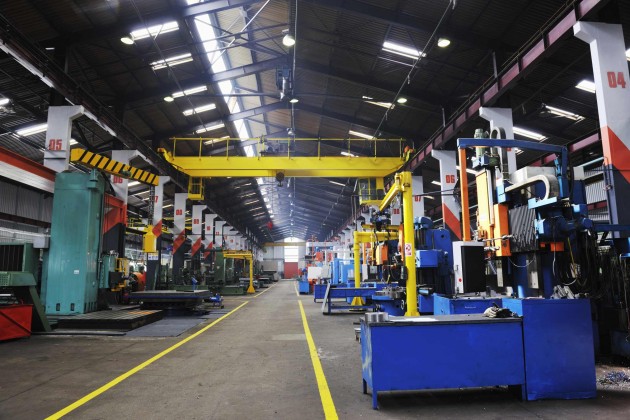
Best uses of working capital in manufacturing
by Ken Hurwitz

Asset-based finance allows businesses to invest in product and business development
Working in the asset-based finance industry, one of the most frequent questions I encounter from both existing and potential clients as they try to figure out how best to finance their equipment purchases is: “Why should I lease? Isn’t leasing only for companies who can’t write a cheque?”
There’s no doubt many of my customers aren’t ‘bankable’—meaning from a financial perspective, the company can’t support the transaction required to get a new piece of equipment. Buying the latest technology can be a very expensive proposition, and despite the fact good equipment—when properly maintained, will run for more than a decade (there are plants where 20-year-old machines are still running and holding tolerances)—it’s still a significant cost and difficult for typical bankers to understand.
We recently hired a new credit analyst who came from a chartered bank, and I got a first-hand recount of how they review assets internally. Essentially, they looked at any asset, whether it was a machine tool or a trailer, and assumed if the deal went bad they would recover about 20 percent of the value.

On the other hand, when a leasing company with expertise in machinery and equipment looks at that same transaction, they know the recovery is a much higher percentage and are therefore able to approve the lease because the perceived risk or exposure is much smaller.
That said, my largest and most successful customers have very well established banking relationships with large operating lines, which they primarily and properly use for short-term debt such as financing receivables or to cover short-term costs like buying extra tooling and material for a large job they just landed. They use equipment leasing as a complement to their bank.
They essentially match the lenders with their debt requirements. They stay away from tying up bank lines or working capital with long-term needs such as machinery and equipment. The approach allows these owners to reinvest in their company, where the return is much higher.
Invest in product development
One example of where cash can be put to best use is in product development. Product development can’t be financed, but the return can be enormous. One of my most successful clients, a leading innovator in the medical industry, leases all of its equipment from various sources, allowing it to keep profits in the company to develop new products.
Another customer of mine has a passion for owning property and the business is operated from a number of different plants, all of which are owned. They’ve invested in other properties unrelated to their manufacturing business because real estate is an appreciating asset with a great return.
An additional smart use for working capital is hiring a salesperson. Many of my most successful clients are owner-operators. Not only are they running the plant, making sure good parts are being made and delivered to their best customers when promised, but also handling all the proposals (quoting/estimating). They function as both the sales manager as well as the plant manager; two roles best handled by two people.
Depending on the business, it could make a lot of sense to bring someone in, or assign a current employee to handle sales. Business development is a full-time job but one which can potentially have a great return. Investing in your business is always the highest and best use of working capital, and it’s something which can’t be financed.
Finally, leasing companies provide significant flexibility. When a new piece of equipment is purchased, it usually takes time to get it installed, set-up, programmed and debugged before the owner is making any money. However, regardless of whether the equipment is being financed internally or a lender is involved, the equipment is usually paid upon delivery or with a nominal hold-back until it’s installed.
Leasing companies can offer programs where payments are deferred for a few months, so the manufacturer doesn’t make any payments until the machine is up and running and, most importantly, generating revenue.
This flexibility is also found when a customer has been approved for 80 to 90 percent of the transaction size, but a deposit is required. A competent leasing company can structure a contract so this deposit is paid over the first six or 12 months of the lease, as opposed to in its entirety upfront, and a new piece of equipment can find a floor that may not otherwise have been an option.
Finding an alternative source of funding to complement your bank will allow for more flexibility and could provide many additional options.
 Ken Hurwitz is senior account manager with Blue Chip Leasing Corporation, an equipment finance company in Toronto. Ken has years of experience in the machine tool industry and now works to help all types of manufacturers either source or tap into their own capital to optimize their operations. Contact Ken at (416) 614-5878 or at via email. Learn more at www.bluechipleasing.com
Ken Hurwitz is senior account manager with Blue Chip Leasing Corporation, an equipment finance company in Toronto. Ken has years of experience in the machine tool industry and now works to help all types of manufacturers either source or tap into their own capital to optimize their operations. Contact Ken at (416) 614-5878 or at via email. Learn more at www.bluechipleasing.com
This article is part of the Financial Management Success Centre, showcasing strategies to access working capital, reduce costs, and leverage the value of shop floor equipment.